5. Poison (1991, Todd Haynes)
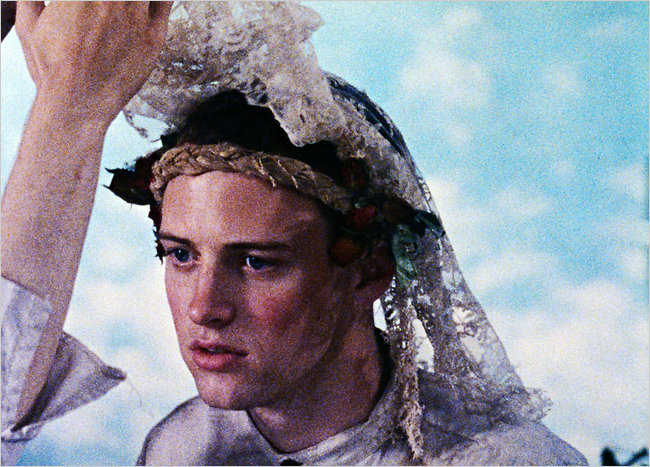
Todd Haynes has become one of the biggest directors in America, getting awards attention and plaudits for films like Far from Heaven (2002) and Carol (2015). In his critically-acclaimed I’m Not There (2007), the fractured Bob Dylan biopic, Haynes demonstrated to mainstream audiences that he is a director willing to break narrative structure and push boundaries.
However, this was already clear in his debut feature Poison (1991). Poison is a film that intercuts three obscure and unrelated storylines: a boy murders his abusive father and escapes by flying out of the bathroom window; an established scientist accidentally drinks a sex serum and starts to spread a highly contagious and body-mutating disease, the media labelling him as the ‘Leper Sex Killer’; and an inmate and petty thief falls in love after he recognises another from his youth.
The first, titled ‘Hero’, plays out like a late-night American crime docu-drama that incorporates an inflated voice-over and dramatic talking-head interviews. By far the funniest of the three, it comments on the role of the media in discrimination and bias. The second, ‘Horror’, plays like an old body horror movie, full to the brim with cheesy overacting and Dutch angles. The third, ‘Homo’ is a prison drama that incorporates flashbacks to an obscure florally-decorated castle-like setting where the protagonist encounters his sexual awakening. In this story there is a conscious contrast between the prison and the open, verdant memory, between entrapment and liberty.
While narratively unconnected, all three are linked on a thematic level, grappling with ideas of transgression, desire, and, ultimately, the outsider. Perhaps a response to the growing AIDs epidemic at the time (most explicitly in ‘Horror’), Haynes tries to paint a picture of what it means to be the subjected. He also makes a comment on the media’s heightened representation of the alienated (again, most explicitly in ‘Hero’.)
Poison is a deeply personal deconstruction of film form and genre, with its beauty and charm formed from daring tonal and stylistic shifts.
4. Blue Black Permanent (1992, Margaret Tait)
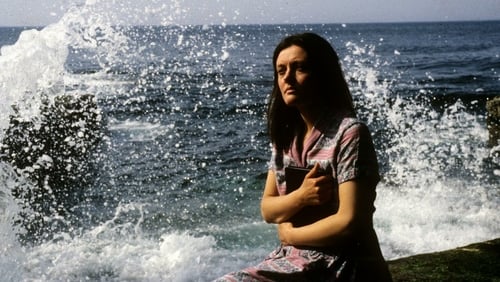
Margaret Tait was 72 when she made her first feature film, Blue Black Permanent (1992). After making many short films/video poems/documentaries, she became the first ever Scottish woman to direct a feature-length fiction film—to be followed by others like Lynne Ramsey, and Hope Dickson Leach. And Blue Black Permanent pertinently meditates on ideas like memory and the past and it wallows in the idea of what could have been.
The film is structured around the memories of a contemporary photographer, Barbara Thornberg (Celia Imrie), about her poet mother, Greta (Gerda Stevenson), who died at a young age: ‘She was younger than I am now but I still look up to her.’ A story told in flashbacks (though it takes a while to grasp whose flashback is whose), we follow Greta as she tries to reclaim a sense of belonging as she wanders the rainy streets of Edinburgh. She has flashbacks of her own mother (who also died at a young age) and reminds herself of the Orkney coastline and her love for water. Despite the ocean (or the blue, black permanent) being a deathly place for Barbara and Greta’s family, it is also a constant, flowing reminder of their existence and true home.
This is a devastatingly beautiful, patient, important piece of filmmaking. The fact that Tait was the first Scottish female feature director at such a late time in film history is a tragic one, but there was no one who could take that responsibility and give it such a tender treatment quite like she did.
Some say that Tait had taken inspiration for Greta from her sister-in-law, a poet and newspaper editor, who died young during childbirth. Others say Greta was inspired by Ann Scott-Moncrieff, the Orcadian writer who died by drowning in 1943. Whoever it was—likely both and many more—Tait has managed to imbue a sense of repressed female creativity into the film’s narrative, insisting that through Greta we consider forgotten or unheard female voices. Blue Black Permanent reminds us of the importance of family, heritage, and a deep connection to place.
3. Right Now, Wrong Then (2015, Hong Sang-soo)
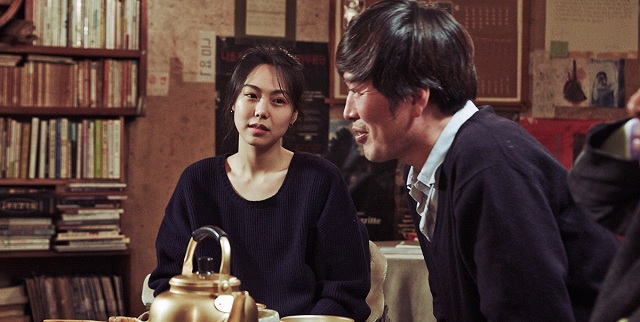
Hong Sang-soo has become one of the most prolific filmmakers in recent years, often releasing two or three films annually, telling brilliantly touching, intimate stories. Usually centring around a young woman (often a film scholar or artist) and an older man (often a film director or lecturer), his work is signposted by flat colouring, slow zooms, and scenes built upon lengthy conversations that are set frequently during a coffee or a meal or with soju in hand.
Right Now, Wrong Then (2015) brings Sang-soo’s style to a head. Cheon-soo (Jeong Jae-yeong) is an arthouse film director who arrives a day early for his guest lecture and chances upon a young painter, Hee-jeong (played by Sang-soo staple, Kim Min-hee). After she recognises him they decide to go for coffee, then to her studio, then for sushi and soju, then to a friend’s house for more food—all familiar Sang-soo settings.
Everything seems harmless as Cheon-soo is complimentary and interested throughout. Slowly, however, Cheon-soo’s agenda is revealed as he starts to claim his love for Hee-jeong. His dishonesty and lies start to surface once we realise his compliments towards her art were merely rehearsed lines he uses to lazily describe his own work during Q&As. By the end of their encounter, things are left very sour.
Then, without warning, the film starts again. This time, though, Cheon-soo is more honest.
Here, Sang-soo highlights the importance of small moments. Behind what superficially seems very similar—settings, conversation topics, activities—small changes in the camera angle side with small changes in both characters’ dispositions. Sang-soo has a beautiful aptitude for focusing on the minutiae of the everyday conversation, observing that conversation is built not on listening but on waiting to speak and affect someone else’s life.
You could compare Sang-soo’s minimalist, conversation-driven work to that of Woody Allen, or even consider him a South Korean naturalist of sorts, but this seems arbitrary. Here, it’s just great to watch a film that starts one way, ends a completely different way, and does something absolutely brilliant and unpredictable in the middle.
2. The Garden (1990, Derek Jarman)
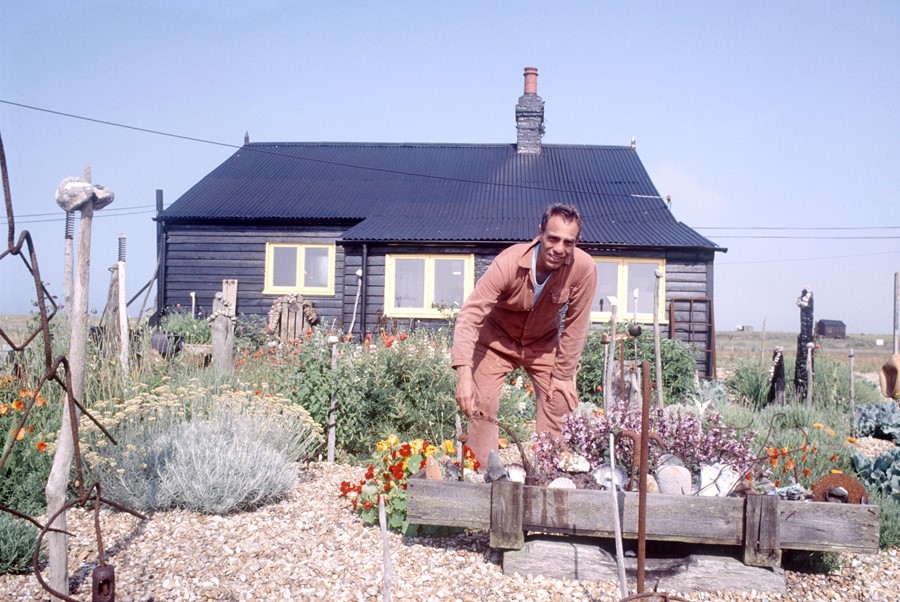
Derek Jarman was a figurehead in British avant-garde in the late 20th Century. A director, painter, gardener, poet, diarist, set designer (for none other than Ken Russell), and gay rights activist, his work is known for its crude honesty and a deep personal understanding of himself and the world around him.
The Garden (1990) is no different, released not long after his monolithic commentary on Thatcherite Britain The Last of England (1987). The Garden repeats its predecessor’s use of super 8 imagery to explore nostalgia and the self in late 20th Century England. Departing from The Last of England’s dystopian depiction of London, though, its focus folds inwards with an introspective observation of wider society. As such, the film is set entirely in Jarman’s coastal home, Prospect Cottage in Dungeness, Kent, which is surrounded by vast shingle, then desert, then a nuclear power plant; his interior environment clashes viciously with external forces.
Prospect Cottage was considered by Jarman as a paradise despite its nuclear and desert-like surroundings. During his time there he started to become progressively weary as his body began to betray him as he came closer to facing death from AIDs. Therefore, his garden can be seen as Jarman tackling his own mortality; it is a place of respite but also one of new found imagination. Jarman plants himself directly into the film (the one character who explicitly interacts with the garden).
While there he has a series of visionary dreams; religious imagery, based off the Gospels, is intercut with a story of a homosexual couple whose idealistic life is brutally interrupted by torture, humiliation, oppression, and ultimately death. Through a kaleidoscopic series of tinted images set to a trippy soundtrack, Jarman seems to be frantically grappling with what it means to be homosexual in the late 20th Century, responding also to Section 28 which he openly opposed from the get go.
There is something magically off-kilter with The Garden, highlighted by the use of the imperfect super 8 images that flicker between monochrome and colour. The apocalyptic desert setting heightens the otherworldly, only to be grounded by Jarman’s home video footage of Prospect Cottage and the nearby sea. The film plays more like a visual poem whereby there is little diegetic dialogue as we meander from image to image, scenario to scenario. Near the film’s end a voice-over pertinently eulogises those who have died from AIDs-related illnesses: “We die slowly and silently… I die slowly and silently… goodbye boys.” It leaves its message ringing.
Derek Jarman died in 1994, soon after completing his swan-song, Blue (1993). Roughly 25 years after his death seems an apt time to revisit his visionary and culturally-important work, work that is as resonant today as it was all those years ago.
1. The Draughtsman’s Contract (1982, Peter Greenaway)
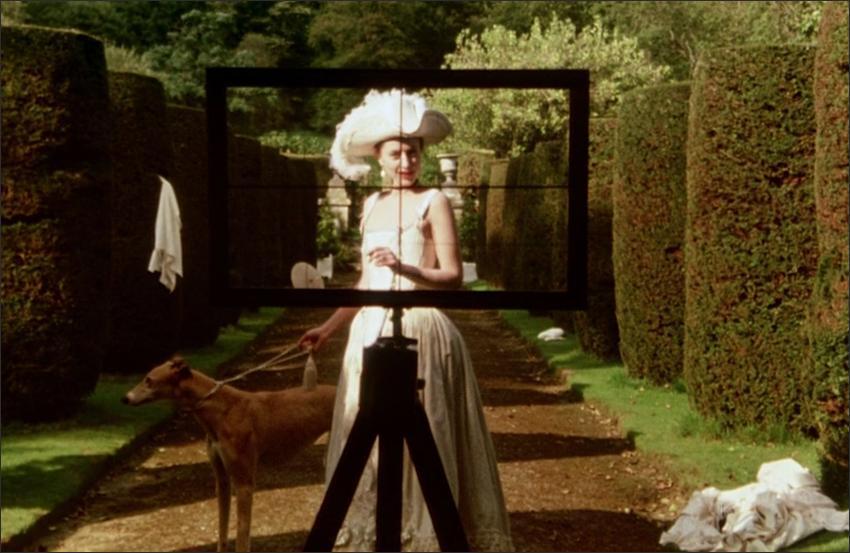
Derek Jarman’s contemporary, Peter Greenaway, was too a student of art and design which is wholly apparent in his debut fiction feature, The Draughtsman’s Contract (1982). It is a film bustling with exuberant costumes and headdresses, pastoral landscapes, and a booming score from Michael Nyman—one that thrusts each scene into a hurried pace. Greenaway constructs a delightfully steamy, satirical period murder mystery.
Set in the English countryside during the late 17th Century, an established but arrogant draughtsman (Anthony Higgins) is commissioned to make 12 landscape drawings as a birthday present for the wealthy husband of Mrs. Herbert (Janet Suzman). After Mrs. Herbert’s persistence, Mr. Neville reluctantly agrees as long as he is paid sufficiently for a man of his talents, is boarded for, and has ‘the unrestricted freedom of her most intimate hospitality.’ What then ensues, roused by Nyman’s thunderous ‘Chasing Sheep is Best Left to Shepherds’, is Mr. Neville’s relationship with the estate as he draws in daylight and the clandestine relationship he has with Mrs. Herbert behind closed doors.
The Draughtsman’s Contract is a very precise and neatly-constructed film with every frame fashioned within an inch of its life, as if they are Baroque paintings. This precision sets up a delicate puzzle that is slowly drip-fed into the narrative. Mr. Neville demands silence and emptiness as he goes about the estate, yet a lone ladder here or a draped shirt there begin infiltrating the landscapes he is painting. He suspects nothing at first and adds them to the picture, but by doing so he documents their existence and slowly incriminates himself into a wild murder plot.
There is much more in the film to revel in: exquisitely comical squabbles, an ominous green man, a urinating garden statue, damp linen, and misbehaving sheep. All this adds to a sensational setting that at once enjoys itself but also comments on the farcical world of period cinema. An exceptionally beautiful, vibrant, and verbose story.
Throughout this list it evident that it is difficult to separate the filmmaker from their work; perhaps the art film is borne from an intensely personal experience of the world around the filmmaker. It is radical, boundary-pushing style mixed with raw and emotional storytelling, and we, the film-goers, are most definitely all the better for it.